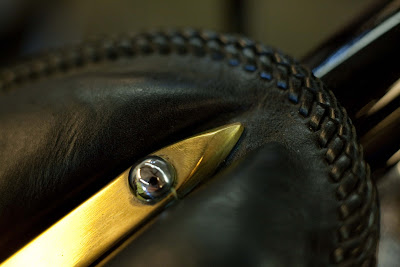Jerry is one of the handiest guys I know. By "handy" I mean that he works with his hands; his hands are his principal tools. Jerry builds motorcycles; beautiful, painstakingly detailed custom motorcycles and he is very good at it - evidenced by the Best of Show awards he has received at prestigious West Coast bike shows.
The custom motorcycle and hot rod world is full of high-tech consultants and accessorizers, running computer-based mills and lathes to turn massive chunks of alloy into precise, computer-generated parts. It is possible to pick up a Harley-Davidson catalog, check the boxes for themes and color schemes and "create" a bike that passes for custom, without so much as lifting a crescent wrench. But that is not the way it works at Jerry's shop.
He pictures something in his mind's eye, maybe sketches it out in pencil, then sets about creating it by hand, using a band saw, drill press, grinder, polishing wheel and hand tools. He has a loose network of machinists, platers, welders and painters who might be called upon for specific tasks - a community of people with complimentary skills and a common love for handcraft. But the bulk of the creative work flows from Jerry's heart and mind through his hands, shaping the steel, alloy, sheet metal and leather.
In this age of alienation, virtual reality, shrinking attention spans, disconnects from the how and why of the everyday machines we depend upon, it is reassuring to see someone who actually knows how to hold a tool and make it work. Jerry's shop makes a case for working with your hands.Jerry Wasemiller lives and works in Yolo County, CA













